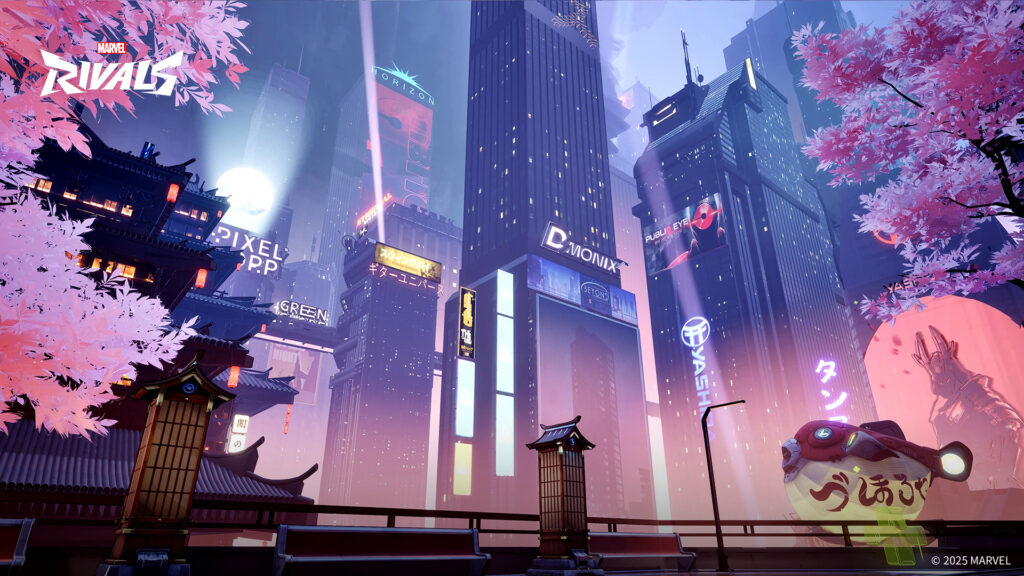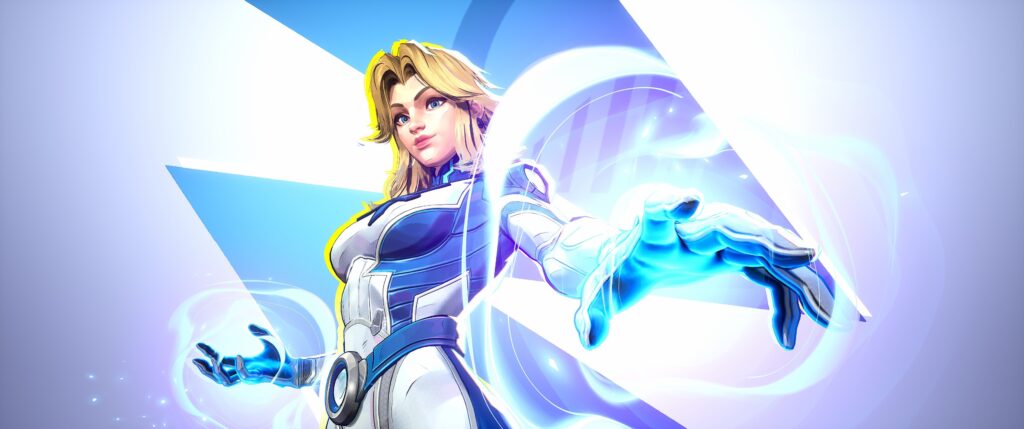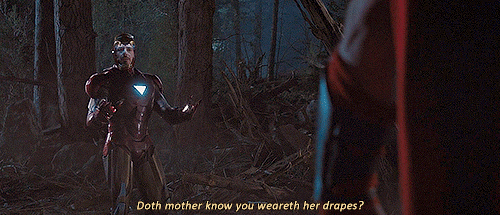Marvel Rivals: What Keeps the Marvel Universe Spinning
14 February 2025When Marvel announced Marvel Rivals, it seemed like just another tie-in—a flashy but forgettable addition to Marvel’s vast gaming history. But instead, it’s shaping up to be one of the most strategic transmedia moves Marvel has ever made.
It’s a chess piece in Marvel’s grander strategy of world domination (okay, brand domination). While it entertains fans, it also drives them to binge-watch the MCU, re-read comics, and open their wallets for merch.
Apart from creating a great game that allows fans to live and breathe their Marvel fantasy, it’s also about keeping the Marvel brand alive in your head rent-free.
What Marvel Rivals Gets Right: Storytelling That Never Stops

Marvel has a massive advantage from over 85 years of its existence: its characters, stories, and lore are everywhere and instantly recognizable. The game uses its endless content pipeline to tap into decades of fan nostalgia while staying relevant to new audiences, continuing its legacy for years to come.
Consistency Without Exhaustion
The heroes in Rivals serve as triggers for nostalgia.
Jump into a match as Captain America, and his signature shield bash instantly recalls Steve Rogers’ fight with Bucky on that rainy runway. See Kang the Conqueror, and you’re thinking about his role in the next MCU film. Marvel doesn’t need to explain these moments—they’ve been ingrained in pop culture for years. Rivals uses that familiarity to create a seamless, immersive experience. The game feels like a natural extension of the Marvel universe instead of a forced Marvel spin-off.
Cross-Promotion Without Feeling Cheap
Plenty of games try to tie into larger franchises, but few do it as elegantly as Rivals, which also hinges on the foundation of it being a great game to begin with.
New MCU film coming out? Expect tie-in events and expansions. The Razer Cortex Lunar New Year Bonus Event is a perfect example of a win-win scenario for both Marvel and its gaming partners. By layering in seasonal incentives, Rivals keeps players engaged while utilising external platforms for greater exposure.
The Razer Lunar New Year event poster even featured the Fantastic Four, subtly teasing what would eventually become the trailer announcement to kick off MCU Phase 6. This kind of subliminal marketing showcases Marvel’s ability to plant the seeds of anticipation before official reveals, keeping fans engaged without overwhelming them.
The synergy feels natural, not forced. Marvel’s marketing operates as a constant feedback loop: the game boosts the films, the films boost the game, and the entire franchise stays with you long after your eyes leave the screen (silver or otherwise).
Player Retention Done Right (Take Notes, Blizzard)
Many live-service games struggle to keep players engaged (Overwatch 2 says hi), but Rivals thrives because Marvel understands a simple truth: players stick around when they feel heard, engaged, and excited.
Constant Updates Keep the Game Fresh

Balance patches, seasonal expansions, and special events—Marvel keeps Rivals alive with a steady stream of meaningful content. The new Spider-Man skin drop is another example of how Rivals seamlessly integrates with the broader Marvel ecosystem.
Just ahead of the PC release of Marvel’s Spider-Man 2, Rivals introduced a new Spider-Man skin modeled directly from Insomniac’s game, bringing the high-detail suit straight into the game. This sync strengthens the Marvel brand across platforms. Players swinging through New York in Spider-Man 2 can now see that same version of Spidey in Rivals, reinforcing their connection to the character across multiple experiences.
And it doesn’t stop there. The Fantastic Four content rollout schedule demonstrates Marvel’s ability to create sustained excitement across mediums. With Sue Storm arriving in Rivals earlier this year and The Fantastic Four: First Steps trailer recently dropping, Marvel is ensuring that gaming and cinematic releases work in tandem to build long-term anticipation.
They’re not reinventing the wheel. They’re just keeping it spinning.
Nostalgia as a Retention Tool

Beyond competition, hero selection in Rivals is designed to make you feel something. Playing as Iron Man and fighting Thor lets you relive the magic of moments like “Doth mother know you weareth her drapes?”
The game doesn’t have to invent new characters—it pulls from a 80+ year catalog of fan-favorite heroes and villains. That emotional connection keeps players coming back, long after the novelty of a new hero addition set has worn off.
Events That Actually Matter
Some games (cough Love and Deep Space cough) rely on superficial seasonal events—minor reskins, rehashed mechanics, and low-effort rewards.
Rivals does the opposite. New hero drops, lore tie-ins, and real stakes make every event feel like an essential part of the game’s evolving universe. Marvel creates FOMO, but it’s fun FOMO, not “grind until your fingers bleed” FOMO.
You become part of an IP that spans several generations.
The Bigger Picture: Lessons for Indie Developers
Marvel has the advantage of a billion-dollar budget and one of the most beloved IPs in history, but that doesn’t mean smaller studios can’t learn from their approach. Here’s what Rivals gets right that any developer can apply.
1. Think Beyond the Game—Create a Universe
Marvel doesn’t think about Rivals as a single release. It’s part of a much larger ecosystem that spans movies, shows, merchandise, and comics.
Indie teams might not have an MCU to lean on, but they can build interconnected experiences—whether that’s through sequels, expansions, or a well-supported community management model—to keep players invested in their world. But keep in mind, Rome wasn’t built in a day.
We’ll be covering Riot’s transmedia masterpiece in another piece soon, stay tuned!
2. Talk to Your Community (and Actually Listen)
Remember Silksong? Of course you don’t—it’s been little but radio silence for six years. This one seems obvious, but even some of the most beloved indie studios (Team Cherry, looking at you) struggle with this. Fans can forgive delays, balance issues, and even missteps if they feel like the developers are listening.
Silence kills hype. Regular updates and community engagement aren’t optional in an era where attention spans die in less than 10 seconds.
And if you need a role model? Look at Larian Studios—their approach to community-driven development with Baldur’s Gate 3 has set a new standard for transparency and player feedback.
3. Make Players Feel Something
Marvel sells moments.
Players want to relive their favorite battles. If your game doesn’t create emotional connections—whether through story, characters, or nostalgia—why would anyone stick around?
Why Marvel Keeps Winning
Marvel isn’t perfect (let’s not talk about you-know-what), but Rivals proves why they remain the gold standard for transmedia storytelling.
For developers and marketers, the takeaway is simple. Marvel’s transmedia machine keeps the past alive by ensuring the future never runs dry. Rivals is proof that the next era of gaming won’t be about isolated hits, but about ecosystems that never stop evolving.
The real question now? Are you bold enough to follow Marvel’s lead?
– Ameera Rahaman, Content Manager

